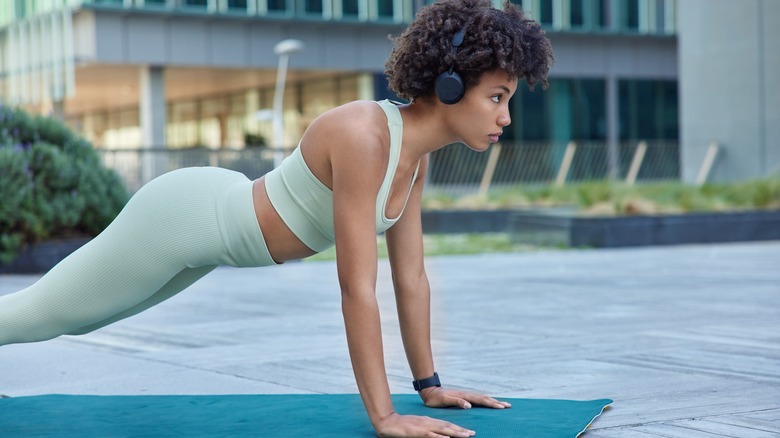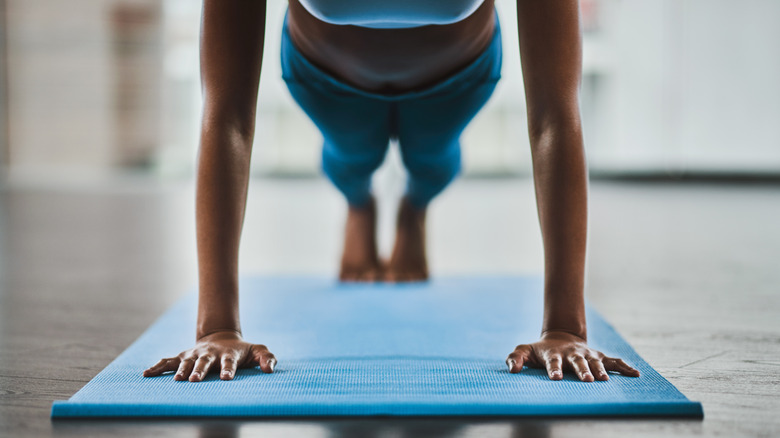Planking Strengthens These Unexpected Muscles (In Addition To Your Abs)
Long gone are the days when sit-ups were glorified as the ultimate ab-enhancing exercise — the tables have since turned in favor of planks. Planks can take many forms and be modified in a number of different ways depending on what works best for you. The straight-arm plank, however, is the most demanding of positions.
A straight-arm plank involves positioning yourself as if preparing for a push-up. Supporting yourself with your hands and toes, your arms should be held straight and aligned squarely underneath your shoulders. Your legs should be extended straight out behind you and your feet spaced about hip-width apart, explains Healthline. Engage your core as you attempt to maintain this position for upwards of 10 seconds without allowing your back or hips to curve towards the floor. Note that a straight-arm plank can be modified so you're supporting yourself with your forearms rather than your hands.
In addition to targeting our abs, planks activate a whole bunch of other muscles in the body. In fact, there's not really any muscle group that they don't hit. "When done correctly, a plank is a full-body exercise that works nearly every muscle in your body head to toe," physical therapist Grayson Wickham told Shape.
Planks give our upper body and lower body a workout
Starting from the top and working our way down, planks activate many of our upper-body muscles. The exercise helps shape the muscles of our upper back, better define our pectorals, and strengthens a muscle known as the serratus anterior, which is located on the side of the chest and shoulder, explains Prevention. More specifically, you're hitting those popular target muscles: the deltoids, triceps, and biceps.
Planking also gives our lower body a thorough workout. When tightening your lower abdominal muscles, you're also squeezing your hamstrings, calves, and glutes. All of this can boost our overall hip strength, which is particularly important for those of us who spend most of our day sitting. Additionally, since you're hoisting yourself up onto your toes, you're also flexing the foot's extensor muscles, which allow us to stretch our toes and ankles (via Cleveland Clinic).
If you're new to planks, don't get discouraged if you're only able to hold the position for a few seconds. Set a planking goal of 10 to 30 seconds, experts at Harvard Health Publishing recommend. While some people can maintain the position for several minutes (or several hours if you're looking to beat the world record), planks that exceed two minutes aren't really any better for us than those that last half a minute.


